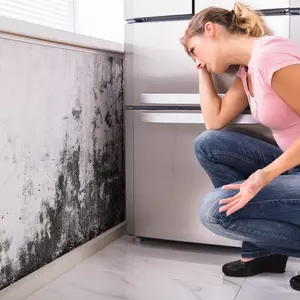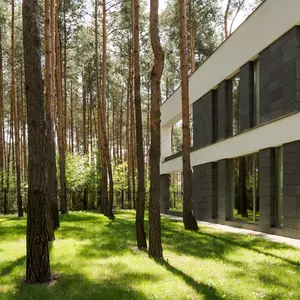
Improve your indoor environment
Everyone knows the problems that stale air can cause at home or in the office. Temperature, humidity, odours, drafts and pollutants in the air can have a significant impact on our indoor environment and well-being. With the right technology, you can transform your home into a healthy oasis, free of pollen and viruses.
Why is having a healthy indoor environment so important?
We spend up to 90% of our lives in enclosed spaces. Having a healthy indoor environment can significantly boost your well-being.
- Productivity & concentration: Having enough oxygen in the air you breathe improves your concentration. You are also more productive when you have an adequate supply of fresh air, according to a study conducted by Oxford Brookes University in collaboration with LCMB Building Performance.
A healthy indoor environment improves the performance, accuracy and speed of people in a work environment – of course, the same principles apply at home.
- Relaxation: We feel more relaxed when it is nice and warm in winter and pleasantly cool in summer.
- Health: Dry air irritates your mucous membranes and can lead to dry coughs and dry eyes. Impurities in the air can reduce your performance in certain circumstances, while an unpleasant draft can make your muscles feel tense.
Pollen, dust and mites can trigger allergic reactions. All of these can weaken your immune system and make you more likely to get ill. That’s why good air quality is so important.
- Protecting your four walls: High levels of air humidity make it easier for mould to grow in your house. Keeping your air humidity down at a normal level protects the building itself.
Mechanical ventilation
CWL-2
The most compact in its class, extremely quiet and highly efficient – the new CWL-2 series from WOLF.
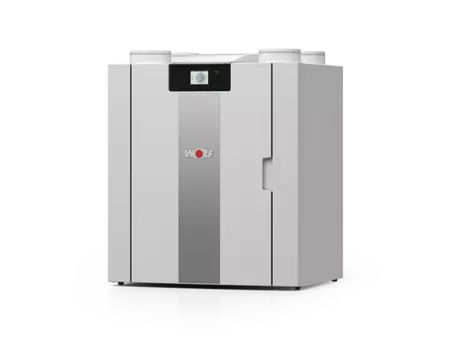
Temperature – the biggest impact on comfort levels
Everybody feels comfortable in different temperatures. It’s not all about the objective temperature – how warm or cold you feel has just as big an impact on your well-being.
ISO Standard 7730 provides some guidelines for ideal temperature ranges in different rooms:
- Living rooms and studies: 20 to 22 °C
- Child’s bedroom: 20 to 22 °C
- Adult’s bedroom: 16 to 18 °C
- Kitchen: 18 to 20 °C
- Bathroom: 24 to 26 °C
- Basement: 10 to 15 °C
Drafts can make you feel uncomfortable
Even if the temperature is perfect, a draft will usually make a room feel pretty uncomfortable. A controlled mechanical ventilation unit will prevent drafts while also providing the perfect indoor environment.
Both centralised and decentralised ventilation systems are available. Centralised systems distribute fresh air to the different rooms of your home from a central location. Decentralised systems can provide a tailored flow of fresh air for different rooms or floors.
Consider the following factors:
- Keep the air speed generated by your ventilation system below 0.2 m/s
- Prevent turbulence
- Ensure that air inlets and outlets are positioned properly
Air humidity
Optimal humidity is between 40% and 60%
Air humidity levels that are too high or too low can have a significant impact on your wellbeing.
Dry air can irritate your mucous membranes and your eyes, while high humidity levels increase the risk of mould and damage to the building.
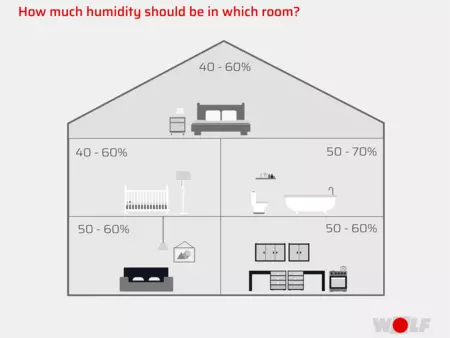
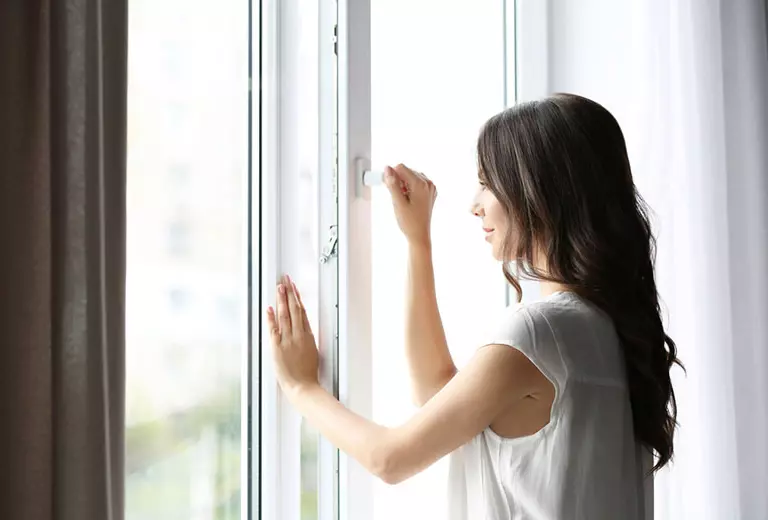
Other factors and tips
In addition to temperature, drafts and humidity, the most important other factors to consider are:
Air quality: One factor that affects air quality is the amount of oxygen in the air. There are some easy steps that you can take, like using plants to purify the air, add extra humidity and increase oxygen levels. The materials and fittings in your home can also have a big impact. Varnishes, oils, cleaning agents and paint can all have as much of an effect on air quality as viruses and pollen.
Lighting: It is frequently overlooked, but lighting has a major role to play in making an area feel comfortable. Comfortable living spaces have a lot of daylight, a sufficient amount of artificial lighting with an appropriate colour temperature and no annoying reflections. Smart lighting systems can also make your living space even more pleasant to be in.
Colour psychology: The colour of a room also has an effect on our comfort levels. Specific colours can affect how we perceive temperatures.
Noise: The sound of busy roads, construction sites and urban environments can have a negative impact on our well-being. A controlled mechanical ventilation system can help because you can keep your windows closed even on the hottest days.
Ventilation for new builds or existing buildings
Controlled mechanical ventilation systems work particularly well in buildings that are well-insulated, like new builds, which have to meet demanding insulation standards.
Ventilating on a regular basis is particularly important in a new build precisely because they are usually so well insulated. A centralised ventilation system can do this automatically while keeping you protected against noise and disruption.
That’s why you should consider a centralised ventilation system before you start your build. The cables and ducts used by centralised ventilation systems can be concealed in your walls and ceilings.
In certain situations, it can make sense to integrate a ventilation system into existing buildings which aren’t insulated to such a high standard. The systems used in these buildings tend to be of the decentralised variety so that you can keep the air humidity down in the bathroom, for instance.
This involves connecting ventilation ducts to different rooms through holes in the wall to keep air humidity levels down and counteract mould.

